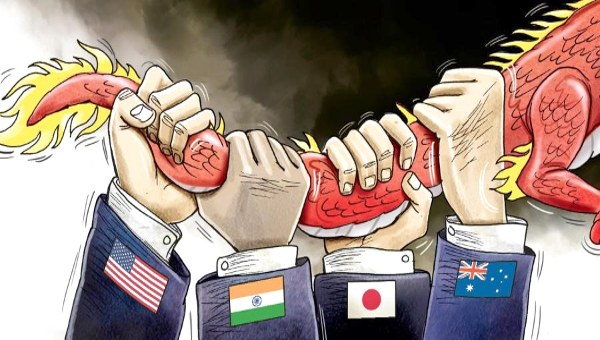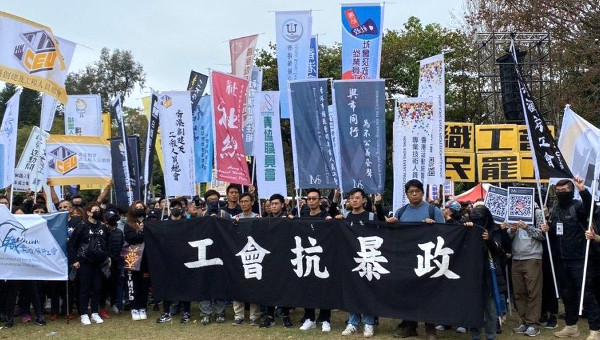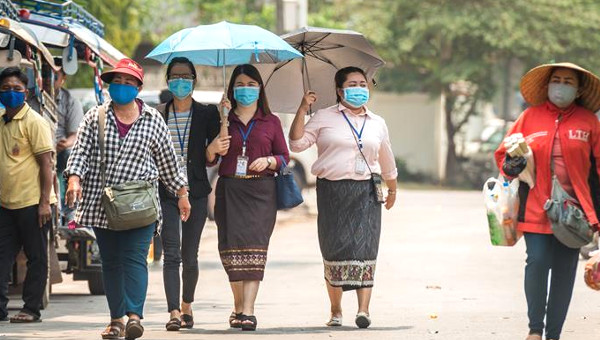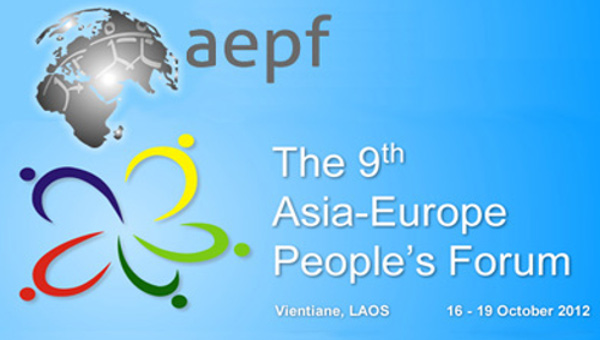The Present is the Beginning
A labour organizer’s letter to the Hong Kong Confederation of Trade Unions (HKCTU) from prison.
On September 1, 2020, Hong Kong Confederation of Trade Unions (HKCTU) organizer Leo Tang was found guilty of “possession of an offensive weapon” in an October 2019 protest against the government’s emergency law and mask ban. Leo was arrested when police found a telescopic stick in his bag and was bailed out at the time. He is currently serving a four-month sentence. Read his statement on the eve of his incarceration here.
When I first came across the news about the September 6th arrest of a bus driver, I was excited to see that more people were talking about the newly-formed Bus Industry Union. Though this wasn’t enough to stimulate collective action, we can see the progress this union has made in only one year. The Bus Industry Union, unwittingly, has entered a paradigm shift. The figure of the “angry bus driver” has likewise entered the public consciousness.
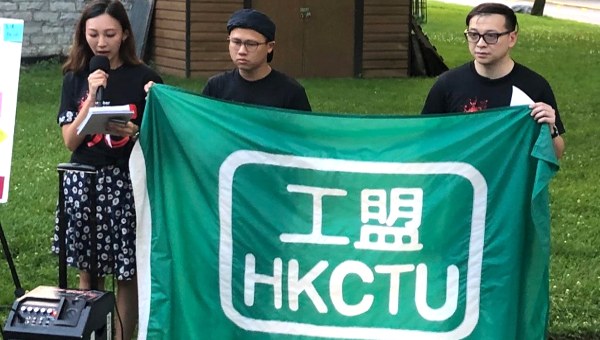
Usually, the bus driver’s capacity to struggle is prescribed: people generally think that “if the bus drivers would just do x or y, then the action/struggle would have succeeded.” However, once the bus drivers take action and emerge as activists, they cease to be defined by the public’s imagination. This is precisely what trade unions should aim for. Just imagine: if the “angry bus driver” didn’t simply encounter police violence that day but actively engaged the police during the demonstration, the outcome could’ve been very different.
Revolutionizing the labour movement is not a matter of technique, but a paradigm shift. It is not about how many articles you can write and post on social media, or a question of whether there are a good 20 or so militant activists in your contact list. It is about a total transformation, from political analysis and understanding the current conjuncture all the way to developing new practices.
The New Unions’ Potential in Sustaining the Movement
We saw throughout the past year how the “worker subject” emerged alongside the “Hongkonger subject” in a movement centered upon identity politics, particularly in organizations like trade unions. From political demands to advocacy on a variety of issues, the subjectivity of the worker has put into practice a prototype for a new kind of labour movement. The incorporation of worker subjectivity into the Hong Kong community was not bound by individual concerns. Rather, the melding of both fledgling positions inspired deeper political and economic ruminations.
During the “anti-pandemic phase” of the movement, various unions fought their respective company managerial and sectoral forces on issues such as health safeguards in the workplace, coercive unpaid leave, and the government’s handling of the outbreak. These clashes came to transform the nature and intricacies of the employer-employee relation. Needless to say, the medical workers’ strike at the start of 2020 organized by the Hospital Authority Employees Alliance (HAEA) is the prime example. This rise of worker subjectivity henceforth provided an alternative strategy for the wider movement: the option to get organized.
What matters during revolution is not just the events themselves, but the transformation of relationships. In other words, the key is not to fixate only on which sectors have been unionized, or even the new unions themselves, but the paradigmatic shift this wave of unionization has brought about in the movement.
The medical workers’ strike was the event: its demand for border closures and provision of personal protective equipment, framed as a labour dispute (which in principle gives the strike legal protection), was what transformed the relationship between worker and employer, between worker and labour laws, between worker and politics. Mass mobilization was the event, but moving people to participate and join unions to “legitimately” strike through online calls to action was what established an alternative mobilizing relation.
The Hong Kong Hotel Employees Union that had exposed how medics sent from mainland China were not licensed to practice in Hong Kong and were staying in hotels without first being tested for Covid-19 and quarantined, issued precautions for hotel residents in response, establishing yet another new relationship between the union and the masses. During the referendum campaign for a general strike in opposition to the passage of the national security law, the H&M Staff Union promoted their own referendum to oppose the company’s unilateral revision of the employees’ handbook—which limited the staff’s political expression in their free time and on social media—alongside the wider referendum. This led to the opening of negotiations with H&M, as another example of how employment relations were being reshaped.
The point of the new labour movement, therefore, is not just getting unionized or bridging the new unions together, but to unearth the potential to sustain the movement through the transformation of relations that unionizing achieved, so as to add substance to the movement’s thinking around identity, politics, and economics and bring out diverse discourses. When we say “sustaining the movement,” we are not just talking about the labour movement, but the whole movement. When we discuss this paradigm shift, we must resist the tendency to ask the same old questions – often informed by our political and ideological predispositions – as this may only constrict our thinking.
What are some of these questions that we have gotten so used to asking? “Where should the labour movement go in 2020 and beyond?” “How can the left be sustained?” “Why are issues pertaining to livelihood always overshadowed by politics?” These questions tend to follow a priori assumptions, like “the left occupies a moral high ground” and “the labour movement must persist,” which lead to conclusions and hypotheticals that may stray from the realm of common knowledge. The truth is, because such pseudo-questions have had little significance amongst the masses, the resulting analysis of the labour movement would seem out of touch with public sentiment and the wider political moment.
These are the real questions we need to ask now: what kind of “new” labour movement can hold actual significance for this mass movement and its supporters? Does it currently hold such significance? If not, what does it lack? To handle these questions, we have to avoid treating this “new” labour movement as a labour movement per se.
Yes, this is my assertion: the new labour movement is not really a labour movement. Its operation and structure may resemble how trade unions are traditionally organized and may appear to conform with “social movement unionism.” But they are fundamentally different, and the day this “new” labour movement reverts to a “conventional” one would be the day when whatever made it new in the first place would have completely withered away.
The HKCTU was indeed born in a time of turmoil, and has always been a politicized union. In the aftermath of the 1989 Democracy Movement and the Tiananmen Massacre, the HKCTU gained popular support and a parliamentary presence, owing to democratic reforms by the British colonial administration. Before the handover of sovereignty, the HKCTU won several campaigns, which cemented its modus operandi soon after its founding – the parliamentary union model, combining rank-and-file organizing with legislative advocacy. Even during the fight for a minimum wage, this model still seemed highly effective.
How an organization got its start heavily determines the way it evolves. In a social context where relatively open interactions between the state and civil society were possible, organizations like the HKCTU and the Alliance for Universal Pension were able to develop their policy advocacy objectives. Civil society seemed to divide up the work according to the nature of each social issue at hand, and each organization worked independently towards its own goals.
Within this division of labour, unions played the role of workers’ representatives under the umbrella of pan-democrats. Whenever there was a political issue, they would intervene as a “pro-democracy union” and signal positions like “Workers (also) Occupy Central” and “Workers (also) oppose the Extradition Bill.” However, these organizations simultaneously lacked meaningful internal discussion to sort out political, ideological and strategic differences, and were not involved in mainstream debates in which most of the pro-democracy public participated. This was no different for the HKCTU: sparse internal debate, absence from mainstream dialogue, and the fact that de facto spokespersons were often simply reduced to representatives of the pro-democracy camp by the public (despite its intention to be a representative of workers), meant that its political presence was practically non-existent as a confederation of unions.
Since 2008, the idea of a pan-democratic coalition has started to fall apart. Political parties began to diverge – as did the public – but the unions did not involve themselves in this reshuffling. From the Legislative Council by-election in 2010 (sometimes dubbed the Five Constituencies Referendum) to Occupy Central and the 2019 protests, participation from these unions has been indistinct at best and non-existent at worst. They failed to differentiate themselves from the pan-democrats or deal with the coalition’s past controversies and political missteps. We are thus left with unions that are confined to the arena of “labour rights” in the strictest sense and do not engage adequately in political discourse. As such, whenever the unions try to represent the “pro-democratic voice of workers,” they are destined to be sidelined by the (already bureaucratized) pan-democrats – from whom they never cared to distinguish themselves.
Our Role in the Moment of Crisis
In 2019, Hong Kong found itself in a moment when the integrity of its institutions and rule of law unravelled. The public, both compelled by circumstance and of their own volition, resisted in ways and spaces completely outside of what the system permitted, which was exactly what this political reality demanded. The goal of every single decision made by the masses, anchored by the Five Demands, was to “win” – a goal that the pan-democrats had not dared to even dream of for decades.
Worker subjectivity borne out of this struggle does not intend to merely show that there are workers in the movement too, but to weaponize the workday and workplace as a frontier of political struggle. To liberate workers from being dictated to and dominated in the workplace so that they could contribute to the “wider” movement is precisely the significance that the new labour movement holds for the masses. The unions established during this time cannot “reference” past advocacy methods of the “conventional” labour movement in the hope to win campaigns. At the same time, it is difficult to see how civil society could negotiate with the government or force concessions (like the minimum wage policy) in this day and age.
With our friends arrested and imprisoned alongside general institutional decline, it is natural for the public to grow frustrated with the archetypically “pan-democratic ways of struggle.” Frustration with the vocabulary and methods of established politicians is by now universal; there is no point in lamenting this phenomenon. Those who willingly walk into this trap have only themselves to blame, especially when they are often eager to shake off the “pan-democrat” label.
The paradigm shift within the movement is nearly complete, and now every section of the movement has to contend with the questions it presents. How well we address these problems is not simply measured by how militant or moderate we may be, though some objective evaluations do exist. We can ask: is the “new” labour movement stuck in the singular role of representing the voices of workers? Are there political and ideological differences arising between different unions? Are these differences emerging in the HKCTU? These questions seem to have little to do with “labour issues” in themselves, but will form the basis of the development of the new labour movement. In fact, if these new unions cannot break away from the pan-democrats’ old paradigm and make space for political differences, they will eventually regress into a “conventional” labour movement.
The Role of ‘Inter-Union Exchange’ in Civil Society
Having spent the better part of this letter discussing what makes the current subjectivity of the worker “new” in the context of the movement’s paradigm shift, I must now concede one thing. No matter how much we theorize about the union front of the movement, none of our discussions reaches a level where it really means something to the masses. This is because the conditions under which we may organically mediate the politics of movement-building between different unions have yet to arise. Most unions are currently focused on the relationship between their members and the industry they work in, rather than honing a sensitivity of “what counts as being in touch with the masses.” Worse still, there are unions that are resorting to old modes of organizing and struggle. These are areas that really require work.
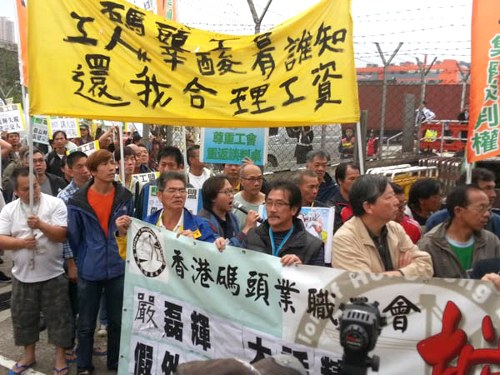
There are already many discussions on the topic of re-devising how our different trades are to be run among my colleagues, which I won’t go into right now. I will instead elaborate on the role that “inter-union exchanges” can play in civil society.
A dynamic labour movement should allow for heterogeneity. If we can make use of inter-union exchanges to bring into dialogue different political approaches, ideologies and strategies, they would resemble a microcosm of civil society. Relationships between unions are not like elections – parties compete in a dumbed-down, zero-sum game – and political debates between unions should likewise be less antagonistic. Expanding this network and maintaining its dynamism, in the ideal scenario, could empower these exchanges as a platform for different camps in civil society to exchange opinions, with the labour movement acting as its medium. This mediating role means more than just persuading different camps to support labour rights; it is about strengthening relations and creating space for healthy disagreements that do not cause fracture.
This may resemble what Hong Kong’s activists often call “social movement unionism,” but is different in several ways. The old paradigm is characterized by three elements:
- Drawing on the support from various factions in society to support a labour struggle through social activism – much like the 2013 dockworkers’ strike;
- Speaking out as workers in regard to political issues; and,
- Forming broad alliances to lobby for policy changes.
The new paradigm is not just discovered in the newly emerging subjectivity of the worker. Quite the opposite: it is only through examination of the existing paradigm can we fairly say that we have moved on to something new and different. To build and enter a new paradigm is not the wholesale rejection of that which is labelled old, as opposed to, for instance, Chinese New Culture intellectual disillusionment and iconoclasm of “old” values in the vein of “total westernization (全盤西化).”
For example, the right to collective bargaining had long been sought after by Hong Kong’s labour movement, something that is next to impossible to win right now via institutional means, perhaps more so than ever before. Yet, it is also currently commanding the attention of many Hongkongers in an unprecedented way, right on the back of Cathay Pacific’s massive layoffs. We should know with clarity now that a group of people united to fight for the right to bring the boss to the negotiating table could achieve no less than what a lawmaking body can.
Beyond grasping key concepts and unflinchingly confronting the reality of the political landscape, our task as unionists is ultimately about putting things into practice, rather than conducting academic research or writing articles. This means our biggest obstacle is often our daily habits. For example, we are used to convincing ourselves that our work is meaningful, but we overlook whether it may be as meaningful to the general public. We appoint a role for ourselves within the movement, but rarely think about whether these roles have broader resonance beyond self-proclamation. Truly meaningful work – ”real” for us and the masses we are trying to rally – will surely widen support networks and connect them with the resources we need to grow. What has become a force of stasis in the process of revolutionary transformation is then perhaps a narcissistic tendency to validate ourselves – that we are doing something exceptional. Habits shaped by routine and the ingrained ethos of “business-as-usual” and “mind your own business” must also be reexamined as we work toward a complete overhaul of social relations.
The window of revolution is now and only now, and it would not last long. Old procedures have become ineffective but continue to linger in our organizing practices, while the new paradigm has yet to stabilize. If this reliance on habit consolidates, new generations of activists may not actually get to enact new directions of revolt.
I am confident that the present is the only time we can usher in this change, and I see the possibilities for this in our team at the HKCTU. Ben Xu quoted Hannah Arendt in his History of Tyranny; allow me to take it from his work here (as decontextualized as it may be):
“But there remains also the truth that every end in history necessarily contains a new beginning; this beginning is the promise, the only ‘message’ which the end can ever produce. Beginning, before it becomes a historical event, is the supreme capacity of man; politically, it is identical with man’s freedom. lnitium ut esset homo creatus est (that a beginning be made man was created), said Augustine. This beginning is guaranteed by each new birth; it is indeed every man.”
The present is the beginning. •
September 13 2020
Lai Chi Kok Reception Center
This article first published on 【現在即是開端:給工盟獄中書】 Facebook. English translation published by Lausan.hk.


